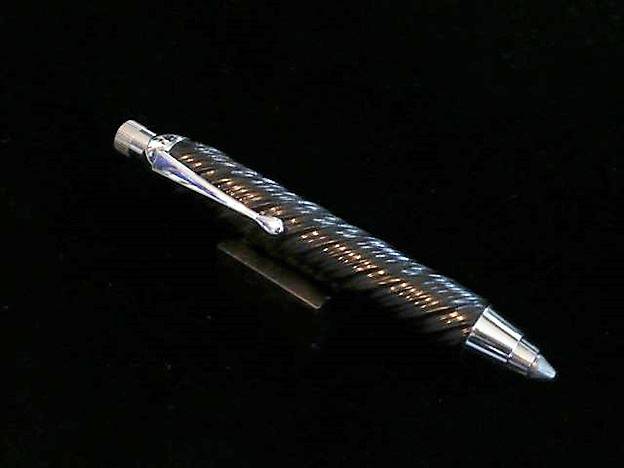John A. Long Jr., MD, FACR
Ornamental Turning
I think everyone can benefit from a hobby, especially to reduce the stress of a busy radiology practice. One of my hobbies is the spiral turning of writing instruments (see examples below). I thought that the group might enjoy this form of art. Spiral and other mathematical-type turning has been around for some time and was originally the province of royalty.
Ornamental turning is a type of lathe turning that uses depth, length and direction (like Cartesian coordinates) to shape pieces of ivory, wood, bone or metal. This is also called "complex turning." Over the years I have employed this type of turning with a lathe to make writing instruments, which has distinguished me from other pen turners whose products are beautiful and smooth.
I personally like the tactile sensation that can only be realized with ornamental pen turning. It also makes it easier to hold the writing device. These instruments can take several hours to design and make due to the multiple steps involved, from picking the material, setting up the lathe to finishing the product.
While doing this, I have enjoyed occasional membership in Ornamental Turners International, based in the United States. Due to my ability, several years ago I was also accepted into the Pen Makers Guild (somewhat like our guild in radiology). In addition, I have developed a nice side business selling pens.
I believe this type of turning began in Bavaria in the 15th century to make rosettes in wood for decorative purposes. The craft reached its peak with the Holtzapffel family in 19th-century London. Many Holtzapffel lathes are still functioning today and used by current ornamental turners.
Gorst duPlessis, a radiologist from Louisiana, was one of the finest turners. He passed on April 18, 2015, at Passages Hospice in New Orleans. He was 77 years old (April 8, 1938–April 18, 2015). Examples of his spectacular work are still available online. At times, Gorst used a Holtzapffel lathe. Watching these ornamental lathes in operation is fascinating! I gave him one of my ornamentally turned pencils for wood marking, and he informed me that he used it every day.
This pencil is made from African blackwood, a form of rosewood. Here are a few additional examples of my work.

Gorst also taught me that mistakes can sometimes create great art pieces, just as errors in observation can make you a much better radiologist.
Ornamental turning employs the same 3D imagery that a radiologist uses every day. Perhaps that is why I have found this artform so appealing.